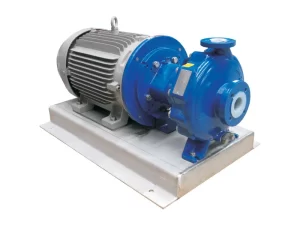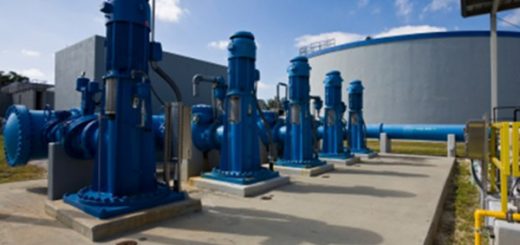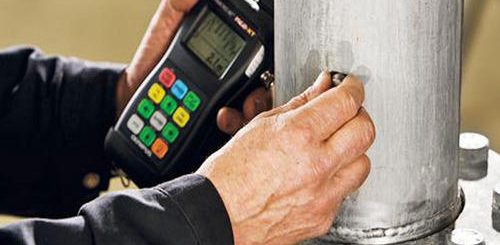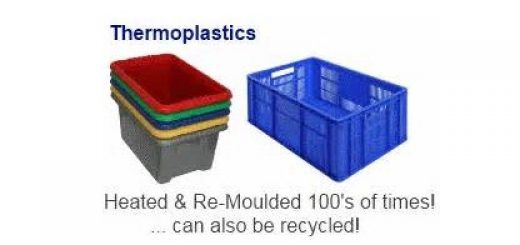What the difference between Magnetic Drive Pumps and Reciprocating pumps
Magnetic drive pumps can be used to pump fluids, including water, chemicals, acids, and molten metals. They don’t have any energy losses due to friction between the shaft and the seal, so they are more efficient than traditional pumps. This can save you money on your energy bills.
Magnetic drive pumps
Magnetic drive pumps are a type of positive displacement pump that uses magnets to transfer power from the motor to the impeller, instead of a conventional shaft and seal. Magnetic drive pumps have a simple design with few moving parts, so they are very reliable and require little maintenance. This can save you time and money in the long run.
Since there’s no shaft penetrating the pump housing, there’s no risk of leaks, the impeller is magnetically coupled to the motor, so there’s no physical connection that could leak. They are ideal for use with hazardous or toxic fluids, as well as in applications where a small leak could be catastrophic. This makes them ideal for applications in the chemical, pharmaceutical, and nuclear industries.
Magnetic drive pumps are quiet, The absence of a shaft reduces noise and vibration, making them suitable for noise-sensitive environments like hospitals, laboratories, and residential areas.
Magnetic drive pumps can handle a wide range of fluids, from thin liquids to viscous slurries, and can operate at high temperatures and pressures. This makes them suitable for a diverse range of applications.
Magnetic drive pumps are energy-efficient, The magnetic coupling eliminates friction losses associated with traditional shaft seals, resulting in lower energy consumption and operating costs.
Some magnetic drive pumps can handle flow rates of up to 1,000 gallons per minute and pressures of up to 2,500 psi. Magnetic drive pumps are becoming popular due to their leak-proof design, quiet operation, versatility, and energy efficiency. The first magnetic drive pump was invented in the 1950s by a German engineer named Heinz Lindenberg.
Magnetic drive pump applications
Magnetic drive pumps can be used in chemical processing, Pharmaceutical manufacturing, Water treatment, Power generation, Food and beverage processing, Pulp and paper production.
Advantages of Magnetic Drive Pumps
They are designed to be driven by the force of magnets, They do not have the shaft coming out of the pump casing, So, there is no need for shaft sealing devices such as gland packing or mechanical seals, You can find Magnetic Drives on many pump types such as end suction centrifugal pumps, self-priming multistage pumps, vacuum pumps, etc.
The external magnet is placed on the drive shaft and is responsible for transmitting motion to an internal magnet that connects to the impeller(s), The Impeller(s) rotates and moves fluid through the pump, Both magnets are separated by a rear casing that creates what is known as a hermetic containment of the liquid with no access to the outside.
There is an extremely low risk of fluid and vapor emissions from being leaked, So, people working on or near the pump are not exposed to dangers from hazardous, corrosive, flammable, and explosive fluids, and other toxic chemicals, and expensive liquids are not wasted.
Magnetic drive pumps are reliable, When choosing a reliable brand, you will have confidence the pump will operate as specified, They require very little maintenance, and they have a simple design, repairs are often inexpensive, Due to an easy coupling there is no need for an alignment of the pump or motor.
Disadvantages of Magnetic drive pumps
Magnetic drive pumps are not suitable for applications that involve solids, even a small percentage, because they work with clean liquids free of solids, Magnet drive pump requires higher power absorption than conventional pumps, magnetic drive pumps are more expensive however because maintenance is very low a quick payback can also be attained.
Reciprocating pump
It is a positive-displacement pump, The design allows for liquid or gas to be trapped in a chamber, that is expelled when the piston within the chamber pushes the liquid or gas outward, The traditional windmill is a classic example of reciprocating pump design.
Pros of a Reciprocating Pump
Reciprocating Pump creates high pressures from low-flow situations, It draws fluid or gas into its chamber through a small opening, It releases the fluid or gas when the liquid or gas is compressed by the piston, That creates a high-pressure released from a low-flow situation.
Reciprocating draws fluid or gas into its chamber through a small opening, It releases the fluid or gas when the liquid or gas is compressed by the piston, Which creates a high-pressure released from a low-flow situation. Reciprocating Pump is an efficient technology, It operates above 90% efficiency, even though it is one of the most affordable options of its type.
The Reciprocating Pump has been designed to perform with up to 3,000 horsepower, It is a durable technology, It works with highly corrosive or abrasive materials, Because the pump can be made with everything from ceramics to carbide, it is used in air transfers and pumping cement.
Cons of a Reciprocating Pump
Reciprocating Pump has a short half-life, It requires maintenance to continue functioning properly, It requires at least one full rebuild over 15 years of use, with careful maintenance occurring.
A Reciprocating Pump creates pulsations, These pulsations can’t be eliminated, If the pulsations are severe, damage to surrounding systems may occur, The Reciprocating Pump may damage itself, The movement of the pistons can be violent enough, in normal operations, so, most reciprocating pumps require a damper.
You can follow science online on YouTube from this link: Science online
Bulk diesel and fuel oil transfer pumps uses, features, types, advantages and disadvantages
Artificial lift pump systems types, uses, advantages and disadvantages




